

Suunto Blog
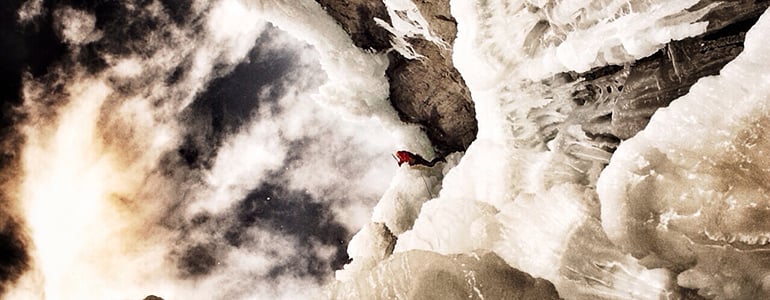
Time to plan some classic ice
Winter is coming! Time to start thinking about that ice climbing trip and where to head to this season. To help you make up your mind, we spoke to Suunto's Matthias Scherer and Tanja Schmitt and asked them for their recommended venues. In this first installment the pair, one of the most active ice climbing partnerships around, offer up some of the best lines for beginners and intermediates in the European Alps. Better start training...
Cogne, Italy
Matthias climbs steep ice in Cogne. ©Tanja Schmitt
Let's start with our home area 'Cogne'. Doubtless one of the best places we know so far to get a lot of climbing done within easy and quick access. But be aware – when it snows or the wind is blowing, our valleys become serious avalanche terrain – so please check always the avalanche forecast, before starting your adventure.
We recommend of course the 'Cascate Lillaz'. In good conditions it's a wonderful climb in the grade of WI 3. Small objective dangers and equipped belays with the possibility to quit the ascent on many places makes it a perfect beginners' line.
Freissinières and Sixt Valleys, France
Matthias climbs 'Shiva Lingam' in the Chamonix valley. ©Tanja Schmitt
This country hosts some of the most impressive ice climbing areas in Europe: Freissinières and the Sixt are valleys with incredible lines.
For scenic climbing in one of the most famous places in alpinism we recommend the 'Ruisseau du Picheu', WI 2 near to the Le Tour village in the Chamonix valley. Of course, you also need to check the avalanche conditions.
Kandersteg, Switzerland
Tanja Schmitt on Glücksritter, Adelboden, Switzerland. ©Matthias Scherer
Not really for beginners but in good conditions and with a stable snow pack a great challenge for the medium ice climber is the 'Glücksritter' fall WI 4+ in Adelboden. Impressive ice formation with a quick access in a wild cirque near to the world famous ice climbing area of Kandersteg...
Stubai valley, Austria
There's no easy way around the Stubai valley and the ice climbing area above the Pinisalm. The approach, with a toboggan (rent at the ski station) from the Elfer-ski area is super fun. Pinistal is home to impressive lines like 'Maenner' or the 'Kerze', a very aesthetic line. We recommend the massive ice shield of the 'Vorhang', WI 4+. In case the climbing is not exciting enough for you the way down back to the valley on the toboggan will do the job...
Velocity, the new ice climbing film from Matthias Scherer and Tanja Schmitt can be seen here.
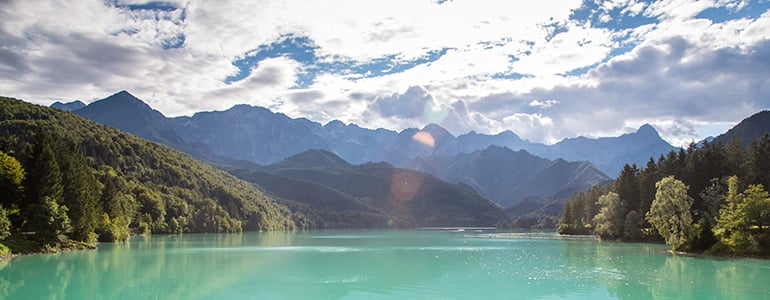
Mother nature left us hungry for more...
Trent Busenbark is a seasoned outdoorsman based in the US. He's also the proud winner of our #AdventureSelfie contest, winning an Ambit3 Sport. How does it feel to win? It’s always nice to see some appreciation for an image you personally captured, especially in today’s world where almost everyone has access to a camera. I am grateful for the consideration. Tell us about the photo.This photo was captured last September in Montana on a backcountry archery hunt. The original intentions were to bivy out for multiple days. On day one we packed in 15 miles (24 km) and the next day we were greeted with plummeting temps, severe wind, and driving snow. This photo was captured with a GoPro on our evacuation out of the mountains. Mother Nature and the rough terrain definitely got the best of us that trip but left us hungry for more. Plans are in place to return.
Trent's winning selfie.What gets your adventure blood pumping? For the most part my hobbies include virtually anything outdoors from horseback riding to skiing. There seems to have always been a heavy focus on hunting and photography. I'm a passionate outdoorsmen with a common goal – get out there as much as possible and always try to capture the moment. Tell us about a recent adventureI recently returned from Italy and enjoyed spending a couple days in the Dolomite Mountains. The views were fantastic! Another Montana trip is planned for November and is sure to present its own challenges.
Features you'd most like to use from the Ambit3?I am excited to use the GPS feature on the Ambit3. In Montana my Sunnto Core with its compass and altimeter proved vital in reading our topo map. It will be nice to leave specific waypoints along the way with the GPS feature. What's next? Towards the end of September I will be heading to Canada for a waterfowl outing and I will be returning to Montana for a late season elk hunt in November. If I am lucky I would like to squeeze in a ski trip this winter as well.
All images ©Trent Busenbark. Follow him on Instagram.
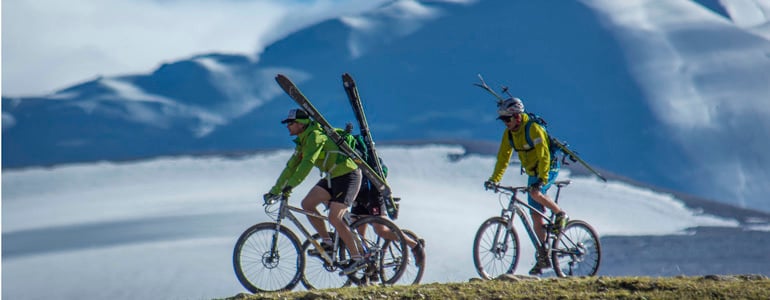
Mission to ski and ride the Himalayan greats
Three men, two 8,000ers, 7 days and 170km. Mode of transport? Bike and skis only. Welcome to the quest of ski mountaineers Benedikt Böhm, Sebastian Haag and Andrea Zambaldi. The German and Italian trio have just embarked on an epic mission to climb Shisha Pangma (8,013 m) then ride their bikes the 170 km to Cho Oyu (8,201 m) where they hope to make another speed ascent, all within a week.
They've spent the last week acclimatising up to 7,000 m and were all set to make their first summit attempt on Thursday September 18. However, bad weather and avalanche risk forced them to turn around. They're now back in base camp, preparing for a second summit bid.“Another attempt to climb Shisha Pangma is being planned and scheduled to happen within the next few days,” they blogged.
Big surprise of the trip so far? Bumping into Suunto ambassador Ueli Steck at base camp, no stranger to speed ascents himself.“Ueli gave many useful tips,” the guys said. Ueli climbed Shisha Pangma and Cho Oyu in 2011. The three ski mountaineers, who are supported by Suunto, can be followed online here.
All images © Elias Lefas
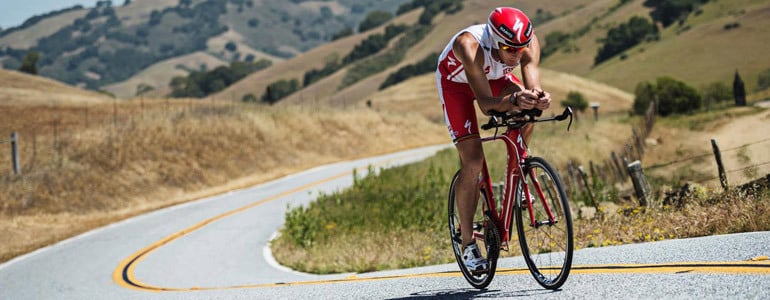
How to pace your triathlon right
Triathlete and triathlon coach Brett Blankner says that pacing a triathlon successfully has three critical components: you should know how long the race will take you, understand the difference between aerobic and anaerobic capacity and be smart on the bike.
”People forget that a triathlon isn't three individual sports with a big break in between. Instead, you should look at it as one long aerobic event,” Blankner says.
“If this race will take you at least three hours, are you fit enough to keep moving forward for three whole hours? Have you trained three hours non-stop before? Should you be going this fast at the start when you have three hours left to go? Probably not.”
Going too hard has a very limited time-span and will end your race quickly
For pacing your triathlon right it is also crucial to learn the difference between aerobic and anaerobic energy systems and fuel accordingly.
“Once your heart rate goes above a certain level – the aerobic threshold – you are no longer aerobic and have to start borrowing energy against your anaerobic system. This is where heart rate can help you tremendously.”
“Going too hard has a very limited time-span and will end your race quickly. Your stomach shuts down so you can't digest fuel and your breathing becomes forced as your lungs try to ram air into your bloodstream.”
Blankner suggests using a method by Dr Phil Maffetone, the coach behind legendary triathlete Mark Allen.
“The heart rate limit for this is about 180 minus your age. If you stay under this number, you can breathe and digest fuel just fine and go all day. You can play with getting closer to and even well over this threshold number based on how short the race is and how close you are to the finish line. With some practice, it becomes the best tool available for great pacing.”
When you see somebody running well in a triathlon, you're not seeing a great runner. You're seeing a great cyclist.
The third critical component Blankner talks about is being smart on a bike. The bike portion of the race is so damaging to your running legs, that you need to make sure you train to limit that damage as much as possible.
“You can take a world-class marathoner and turn him into a slow walker in a triathlon if he can't bike well. If you end up walking on the run, your speed just dropped to near-zero.”
“When you see somebody running well in a triathlon, you're not seeing a great runner. You're seeing a great cyclist who can now run because the bike ride didn't hurt.”
Brett Blankner is an American ultra-endurance athlete and a coach, who also produces Zen & the Art of Triathlon podcast.
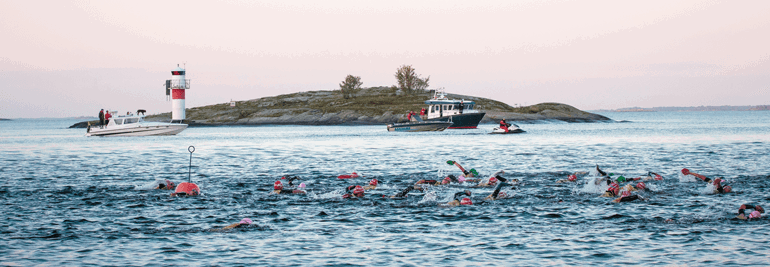
Record breaking conditions at ? till ? swim run championships
One of the most exotic and exciting adventure races in the world recently took place in the Stockholm archipelago. In the Ö till Ö Swim Run Championships the racers faced a grueling 75-kilometer course on island trails, slippery rocks and in cold waters.
In calm conditions the race winners Lelle Moberg and Daniel Hansson of Team Milebreaker of Sweden crushed last year’s course record by 19 minutes with a winning time of 8 hours 16 minutes and 19 seconds.
The Baltic Sea Action Group Swim Run Team, who were previously featured on the Suunto Sport pages managed to break their record in their second Ö till Ö race.
“We were much better prepared and also the equipment we had was improved thanks to the experience from last year. It really made a big difference,” says BSAG team member Armin Hummel.
“The Suunto Ambit2s that we had really helped us to keep track about what was ahead of us and how we were doing. Overall this helped in pushing harder when needed and planning the next stages of the race.”
The Baltic Sea Action Group’s Hummel and his teammate Juha Lindfors finished in 12th place overall and were very happy with their time of 9:49:10.
“This was even slightly better than we expected. We also have to admit that the weather was on our side. The conditions were ideal.”
With the race Hummel and Lindfors wanted to raise awareness over the state of the Baltic Sea and get more people and organizations to commit on actions to save it. You can learn more about Baltic Sea Action Group here.
All images: Nadja Odenhage / ÖTILLÖ14
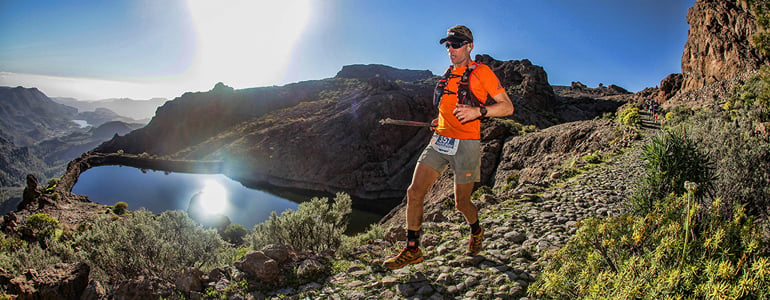
Mountains, volcanoes and ultras
Mountains, volcanoes and ultras: they're what Patrick Müller Suárez lives for. A winner of our #SuuntoAdventure selfie contest on Instagram, he tells us about his love of exploring new trails.
How does it feel to win?I feel very fortunate. I am a faithful Suunto user and have had my Suunto Ambit for about two years now. It has been with me on all my training sessions, races and adventures. When the new Suunto Ambit3 Sport arrives, it will be my new companion in future adventures. I can't wait.
Patrick's winning selfieTell about the photo: The photo (above) was taken in the mountains of Sierra Nevada in Granada, Spain. It was during a tough training session conquering the mountains Veleta 3,396m and Mulhacen 3,478m. It was 9pm in a stunning, spectacular sunset. This was part of my training sessions in preparations for the 2014 Ultra Trail du Mont Blanc in Chamonix.What are your sports?I enjoy running in general – trailrunning and ultras, preferably in the mountains or the volcanoes of the Canary Islands. I also like to swim in open waters, mountainbike, windsurf and ski & snow board.
What adventures are you most proud of? Since January 2014 all my training and adventures have been towards completing the Ultra Trail du Mont Blanc. Preparations have been everything from Transgrancanaria (126 km), sessions in Sierra Nevada, different Canary Islands, different climates, terrains and altitudes.
The two finishing lines I am most proud of are Transgrancanaria in March 2014 and of course recently, the UTMB (168 km) August 2014. In all my training sessions I like to explore and discover new routes. Where I really enjoyed this was in the mountains of Sierra Nevada and there it was great to trust my Suunto Ambit, which was a faithful companion.What Ambit3 features are you looking forward to? I can't wait to try out the new features such as Bluetooth and mobile communication. Now I will be able to update my moves without cables and computers. Besides this, I look forward to measuring cadence and the multisport function, features that the original Ambit doesn't have.
What’s Next?At this instant moment I am enjoying my recent finish at UTMB. But in the pipeline I have exciting projects like filming the best trail and mountain routes in all eight Canary Islands. Maybe I'll give the next Tenerife Blue Trail (101 km) a go, climbing mountain Teide 3,800 m above sea level. In November I'm planning on doing the Ultratrail de Corsellola in Barcelona. Of course I am looking forward to all adventures with my new Suunto Ambit 3 Sport.
Follow Patrick's adventures on Instagram.
All images ©Patrick Müller Suárez














































































